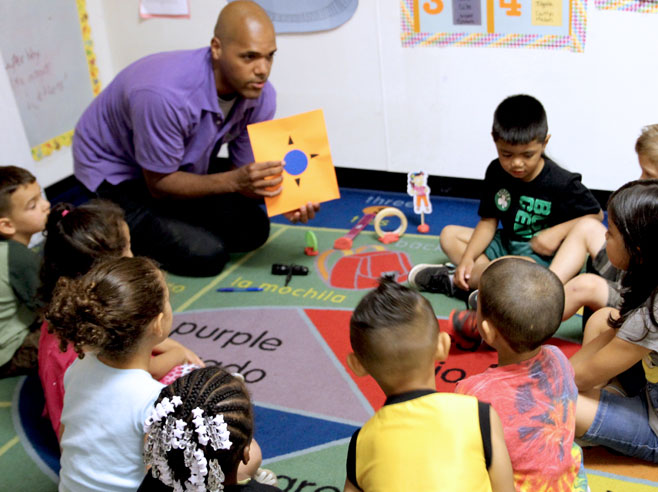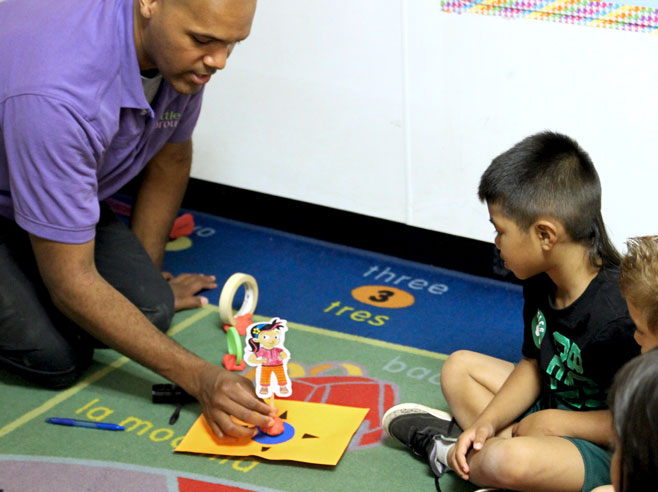Children observe how the shape of a shadow changes as a plate, lid, or other object is rotated.
Materials

- Bright LED lamp
- Colored paper (for making Rotation Station mats)
- 1–3 small plastic plates or lids (if more than one, choose different shapes: such as a circle and a square)
- Glue
- Large piece of white cardboard or tri-fold display board to use as “shadow” wall
- Play dough
- Scissors
- Shadow Puppets (PDF)
Preparation
- Make 1–3 Rotation Station mats, each made of a piece of colored paper with a circle of paper (approximately 3″ in diameter) glued to the center. An object will be placed on this circle and then rotated. You may want to add arrows to the circle, to help children understand that they will be turning the object just a quarter turn at a time. See slideshow for example. Note: One Rotation Station mat will be used in Circle Time, the others will be used in the Guided Small Group activity.
- Attach each plate or lid to a lump of play dough so that it can stand upright.
Directions: Lesson 9
Circle Time: Introduction
- Set up a Rotation Station mat and a white “shadow wall” in a darkened area of the room. Gather children around.
- Introduce the Rotation Station, explaining that the word rotate means “to turn around on one spot.”
- Demonstrate how to “rotate” by standing up and turning around.
- Put the plate (mounted on a base of play dough) on the Rotation Station circle and demonstrate how to slowly rotate the plate a quarter turn at a time.
- Point out that right now, you can’t see the shadow of the plate. What do we need to do in order to see shadows? (Turn on the lamp.) Turn on the lamp and position the plate so that its shadow appears on the shadow wall as the full circle shape of the plate.
- Slowly rotate the plate. Is the shadow getting wider or thinner? (Use gestures to clarify these words.) Chant, Thinner, thinner, thinner . . . as you continue to turn the plate until the shadow becomes a thin line. Compare the first shadow to the shadow now. Possible discussion ideas:
- What does the shadow look like now? Does it look like a circle or a line?
- What did it look like when you first shined the light on it?
- How do you think we can make the shadow look like a wide circle again?
- Continue to turn the plate. Have children describe how the shadow changes. Is the shadow getting wider or thinner? Chant, Wider, wider, wider . . . as you continue to turn the plate until the shadow becomes a full circle again.
- Repeat the rotation demonstration, placing a square plate or the shadow puppet of Nico or Nor on a Rotation Station circle. Use a lump of play dough to hold the plate or puppet upright.
- This time you may want to let a child slowly rotate the object. Lead the class in chanting, Thinner, thinner, thinner . . . until the shadow becomes a line. Then chant, Wider, wider, wider . . . as the child continues to turn the object.


